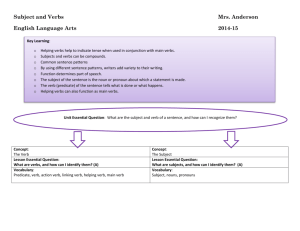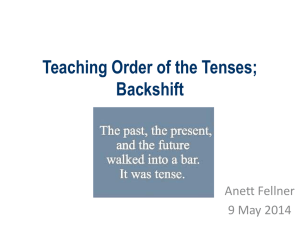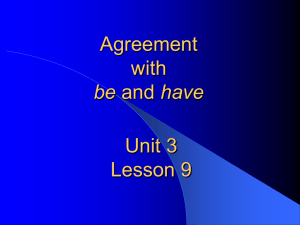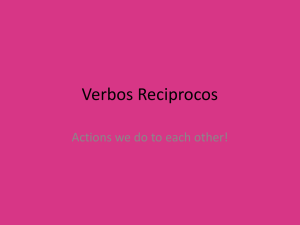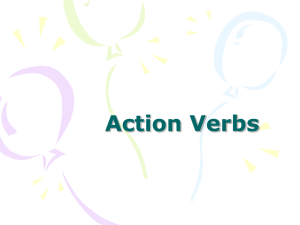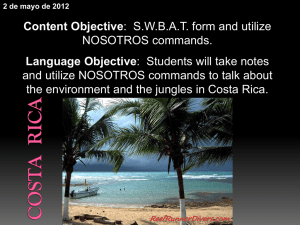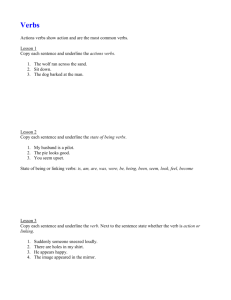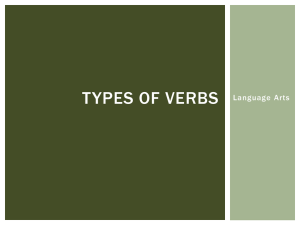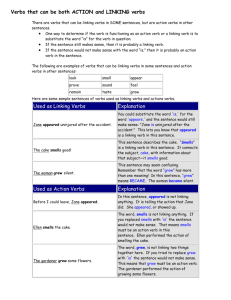Verb Information Sheet
advertisement
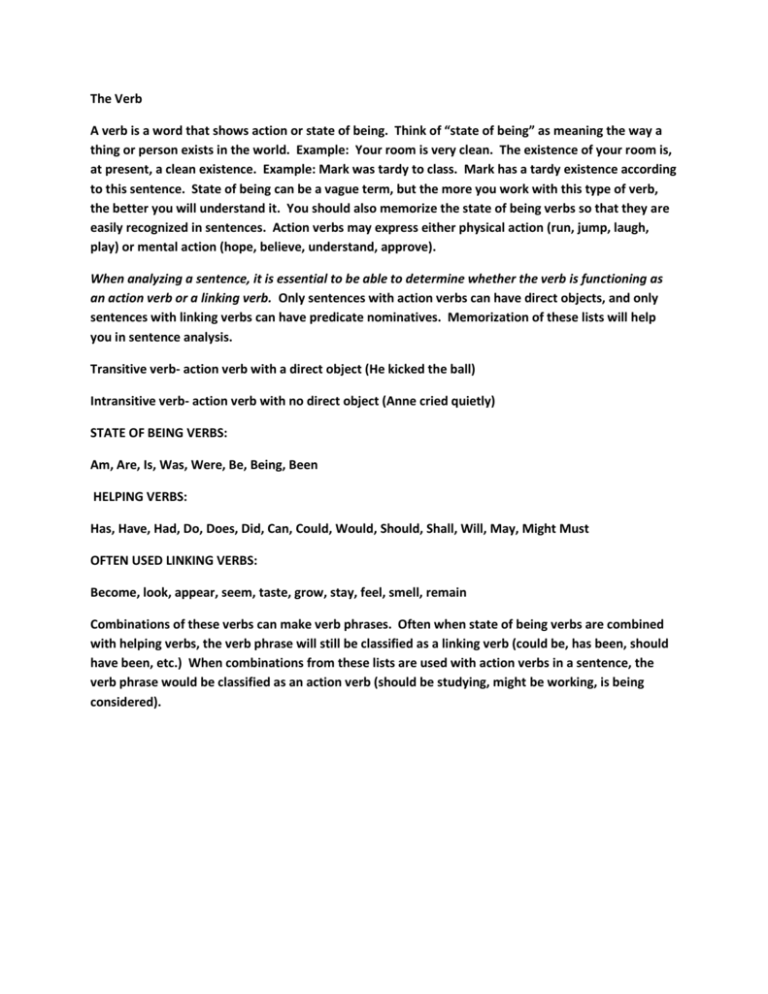
The Verb A verb is a word that shows action or state of being. Think of “state of being” as meaning the way a thing or person exists in the world. Example: Your room is very clean. The existence of your room is, at present, a clean existence. Example: Mark was tardy to class. Mark has a tardy existence according to this sentence. State of being can be a vague term, but the more you work with this type of verb, the better you will understand it. You should also memorize the state of being verbs so that they are easily recognized in sentences. Action verbs may express either physical action (run, jump, laugh, play) or mental action (hope, believe, understand, approve). When analyzing a sentence, it is essential to be able to determine whether the verb is functioning as an action verb or a linking verb. Only sentences with action verbs can have direct objects, and only sentences with linking verbs can have predicate nominatives. Memorization of these lists will help you in sentence analysis. Transitive verb- action verb with a direct object (He kicked the ball) Intransitive verb- action verb with no direct object (Anne cried quietly) STATE OF BEING VERBS: Am, Are, Is, Was, Were, Be, Being, Been HELPING VERBS: Has, Have, Had, Do, Does, Did, Can, Could, Would, Should, Shall, Will, May, Might Must OFTEN USED LINKING VERBS: Become, look, appear, seem, taste, grow, stay, feel, smell, remain Combinations of these verbs can make verb phrases. Often when state of being verbs are combined with helping verbs, the verb phrase will still be classified as a linking verb (could be, has been, should have been, etc.) When combinations from these lists are used with action verbs in a sentence, the verb phrase would be classified as an action verb (should be studying, might be working, is being considered).

